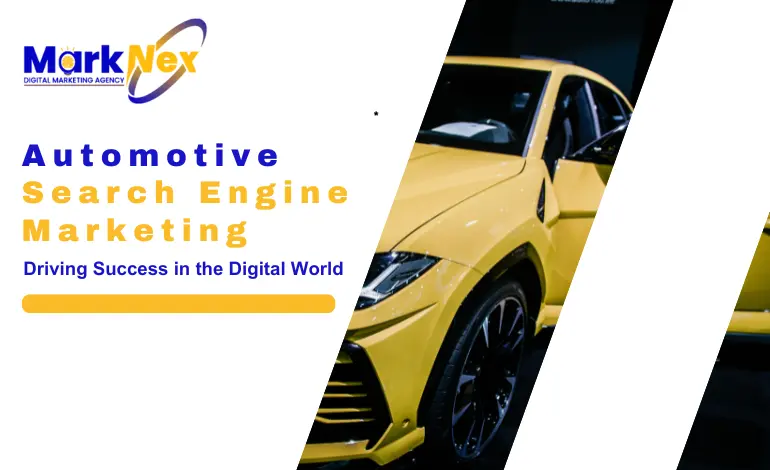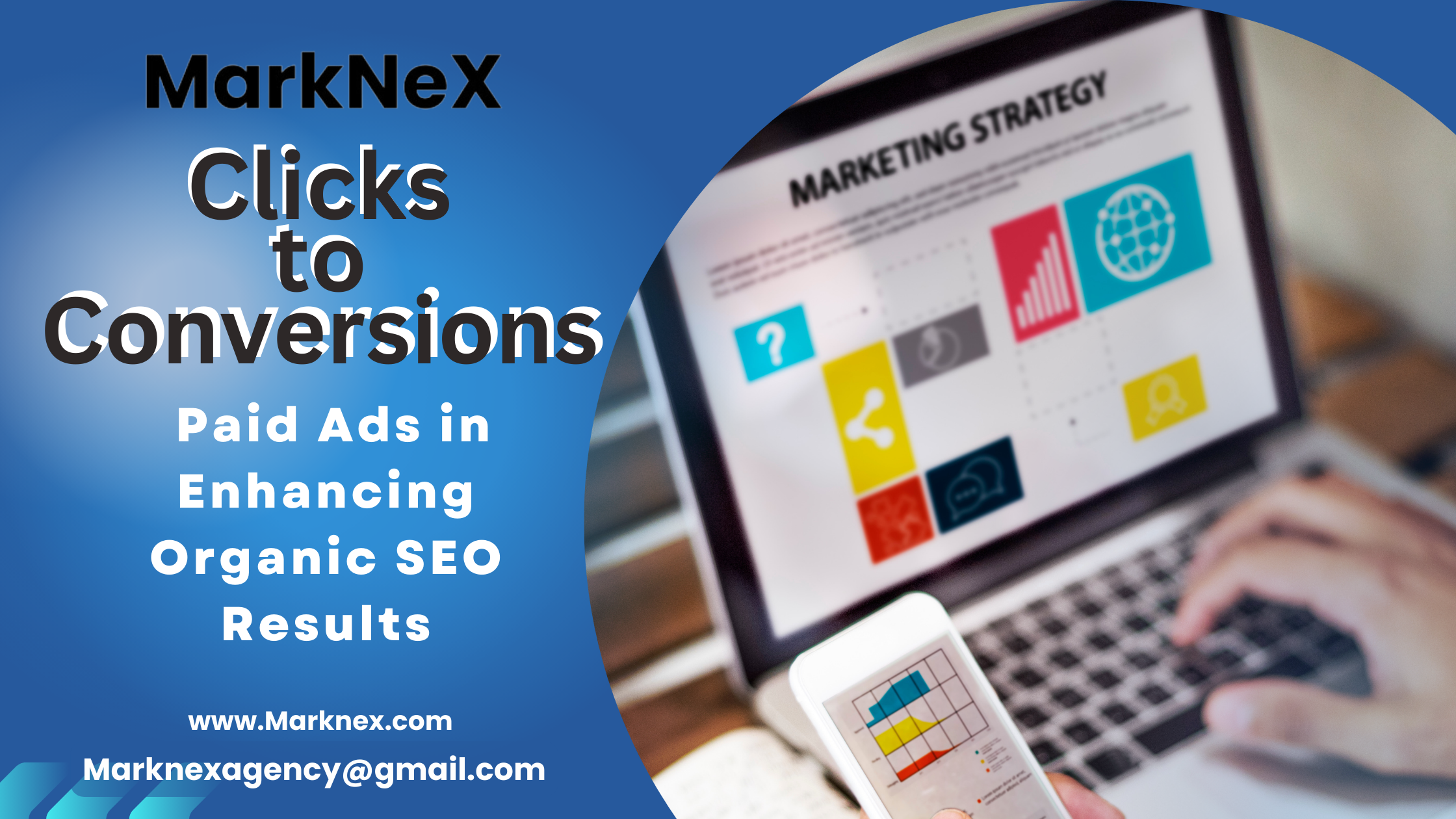In today’s digital era, automotive businesses need to embrace online marketing strategies to stay competitive and increase their visibility on the internet. One such powerful approach is Automotive Search Engine Marketing (SEM). In this blog we will dive deep into the importance of automotive SEM, its key strategies, and how it can provide success in the automotive industry.
Understanding Automotive Search Engine Marketing (SEM)
Automotive Search Engine Marketing (SEM) is a digital marketing strategy aimed at promoting automotive products, services, or brands by increasing their visibility on search engine results pages (SERPs). This is achieved through paid advertising methods like Pay-Per-Click (PPC) campaigns and search engine optimization (SEO) techniques. SEM plays a vital role in connecting potential customers with automotive businesses, generating leads, and increasing online traffic to their websites.
Importance of Automotive SEM for Businesses
In the competitive automotive business, having a strong online presence is no longer optional—it’s a necessity. Here’s why automotive SEM is crucial for businesses:
Expanded Online Visibility
Automotive SEM plays a crucial role in expanding an automotive business’s online visibility. When businesses invest in SEM, they have the opportunity to display their ads prominently on search engine results pages (SERPs). These ads appear either at the top of the search results or as sponsored listings, making them highly visible to users searching for relevant keywords. The increased online visibility provided by SEM allows automotive businesses to reach a broader audience. This audience comprises potential customers who are actively looking for automotive products or services. As a result, the business’s ad is presented to users at the moment when they express interest in automotive-related topics, enhancing the chances of engagement and conversion.
With traditional advertising, businesses might face challenges in reaching the right audience at the right time. However, automotive SEM strategically places ads in front of individuals who are already showing intent to make a purchase or seek automotive solutions. This level of visibility significantly improves the overall effectiveness of the marketing campaign.
Targeted Advertising
One of the key advantages of Automotive SEM is the ability to conduct targeted advertising. This means that automotive businesses can tailor their marketing efforts to specific groups of potential customers. Here’s how it works:
Targeted Keywords:
Businesses can select relevant keywords related to their products or services. When users search for these specific keywords, the business’s ads are displayed, ensuring that the ads are shown to an audience actively interested in those offerings.
Demographics and Locations:
SEM platforms allow businesses to target their ads based on demographic information such as age, gender, income, and location. This level of targeting ensures that the ads are presented to individuals who are more likely to be interested in the automotive products or services being offered.
Devices:
Automotive SEM also enables businesses to target users based on the devices they are using, such as desktops, smartphones, or tablets. This ensures that the ads are optimized for the device on which they are displayed, providing a better user experience.
The laser-focused approach of targeted advertising ensures that the business’s ads reach the right audience, increasing the chances of conversion and maximizing the return on investment (ROI) for the marketing campaign.
Increased Website Traffic
Effective SEM strategies, such as optimizing for relevant keywords and running Pay-Per-Click (PPC) campaigns, can significantly increase the traffic to an automotive business’s website. Here’s how it works:
Keyword Optimization:
By conducting thorough keyword research and incorporating relevant keywords into the ad copy and landing pages, businesses can improve their search engine rankings. When users search for those keywords, they are more likely to see the business’s ads and click through to the website.
Pay-Per-Click (PPC) Campaigns:
PPC advertising allows businesses to bid on specific keywords. When a user searches for a keyword included in the business’s bid, the ad is displayed. The business is only charged when a user clicks on the ad and is directed to the website. PPC campaigns can drive immediate traffic to the site and provide a steady stream of potential customers.
The increased website traffic resulting from SEM efforts can lead to more leads and potential sales. When users visit the website after clicking on an ad, they are already interested in the products or services offered, increasing the likelihood of conversion.
Measurable Results
One of the significant advantages of automotive SEM is its ability to provide measurable results. SEM platforms and analytics tools offer valuable insights into the performance of marketing campaigns. Here’s how it helps:
Performance Metrics:
SEM platforms provide data on key performance metrics such as click-through rates (CTR), conversion rates, impressions, and more. These metrics help businesses understand how well their ads are performing and identify areas for improvement.
Data-Driven Refinement:
With access to real-time data, businesses can make data-driven decisions to optimize their SEM strategies. They can adjust bids, modify ad copies, or refine targeting parameters to improve the overall effectiveness of the campaign.
Measurable results allow businesses to gauge the success of their SEM efforts accurately. It helps in allocating budgets effectively, focusing on high-performing keywords, and making informed decisions to achieve the best possible outcomes.
Competitive Advantage
In today’s competitive automotive market, having a competitive edge is essential for success. Automotive SEM empowers businesses with tools and strategies to gain a competitive advantage over their rivals. Here’s how it works:
Level Playing Field:
Effective SEM strategies are not solely dependent on the size of the automotive business. Even smaller businesses can compete with larger players by implementing smart and well-targeted campaigns.
Budget Flexibility:
SEM platforms often allow businesses to set their own budgets. This means that businesses can allocate their budgets strategically, focusing on high-impact keywords and demographics that offer the most significant potential for conversion.
By leveraging the power of SEM, automotive businesses can position themselves more effectively in the digital landscape, reaching their target audience with precision, and outperforming competitors who may not be utilizing these strategies to their full potential.
Automotive Search Engine Marketing is a powerful digital marketing strategy that can transform the success of automotive businesses. By expanding online visibility, conducting targeted advertising, increasing website traffic, providing measurable results, and gaining a competitive advantage, SEM opens up new opportunities for growth and prosperity in the ever-evolving digital world.
Key Strategies for Successful Automotive SEM

To achieve success in automotive SEM, businesses must adopt these key strategies:
Keyword Research and Analysis
Keyword research is the cornerstone of any successful Automotive Search Engine Marketing (SEM) campaign. It is the process of identifying and analyzing relevant keywords and phrases that potential customers use when searching for automotive products or services online. The goal of keyword research is to understand the search intent of the target audience. By knowing what keywords they are using to find information or solutions related to the automotive industry, businesses can optimize their content and ads to align with user needs effectively.
To conduct keyword research, SEM experts use various tools and techniques to identify high-impact keywords. These may include:
Short-Tail Keywords:
These are brief and generic keywords, usually consisting of one or two words. While they have high search volumes, they are also highly competitive. Examples include “car dealership” or “auto repair.”
Long-Tail Keywords:
Long-tail keywords are longer and more specific phrases that narrow down search intent. They have lower search volumes but often lead to more targeted traffic and higher conversion rates. Examples include “best electric cars for commuting” or “affordable SUVs with third-row seating.”
LSI Keywords (Latent Semantic Indexing):
LSI keywords are contextually related terms that help search engines understand the content’s meaning better. Including LSI keywords in the content can improve search rankings and visibility. For instance, if the main keyword is “car tires,” LSI keywords might include “tire pressure,” “tire maintenance,” or “tire rotation.”
By leveraging a combination of short-tail, long-tail, and LSI keywords, businesses can optimize their SEM campaigns for a broader range of user search queries, increasing the chances of attracting relevant traffic and potential customers.
High-Quality Content Creation
In the world of Automotive SEM, content is king. High-quality and engaging content is vital for attracting and retaining the attention of the target audience. Whether it’s blog posts, articles, or landing page content, creating valuable and informative material can have a significant impact on the success of an SEM campaign.
When developing content for automotive SEM, businesses must focus on the following:
Audience Relevance:
Content should be tailored to the interests and needs of the target audience. Understanding the pain points and preferences of potential customers can help in crafting content that resonates with them.
Originality:
Search engines prioritize original and unique content. Plagiarized or duplicate content can negatively affect search rankings and SEO efforts.
Keyword Integration:
Content should incorporate the relevant keywords identified during the keyword research phase. However, it is essential to maintain a natural flow of language and avoid keyword stuffing, which can harm the user experience.
Visual Appeal:
Including images, infographics, and videos can enhance the visual appeal of the content and make it more engaging for users.
High-quality content not only attracts organic traffic but also encourages visitors to spend more time on the website, explore other pages, and potentially convert into leads or customers.
On-Page Optimization
On-page optimization is a critical aspect of Automotive SEM that focuses on optimizing elements within a website to improve its search engine rankings. By optimizing these on-page elements with relevant keywords, search engines can better understand the website’s content and relevance, leading to higher rankings in search results.
The key elements that are optimized during on-page optimization include:
Title Tags:
These are HTML tags that define the title of a web page. Including relevant keywords in the title tag helps search engines understand the page’s topic.
Meta Descriptions:
Meta descriptions are brief summaries of the page’s content displayed in search results. Writing compelling meta descriptions with targeted keywords can improve click-through rates.
Header Tags:
Header tags (H1 to H6) structure the content and indicate its hierarchy. Using header tags with relevant keywords can improve readability and SEO.
Image Alt Texts:
Alt texts provide descriptions for images on a website. Optimizing alt texts with relevant keywords can improve image search rankings.
By implementing on-page optimization best practices, automotive businesses can enhance their website’s visibility in search results and make it more user-friendly, ultimately driving more organic traffic.
Link Building and Off-Page Optimization
Link building is a crucial off-page optimization strategy that focuses on acquiring high-quality backlinks from reputable websites. Backlinks act as “votes of confidence” from other websites, indicating to search engines that the linked website is valuable and authoritative.
The process of link building involves reaching out to relevant automotive websites, industry directories, or influencers to request backlinks. High-quality backlinks from authoritative sources can significantly improve a website’s search engine rankings and domain authority. However, it is essential to note that link building should be approached with caution. Search engines penalize websites engaged in spammy or unethical link-building practices. It’s crucial to focus on building natural and relevant links that genuinely benefit users and the automotive community.
Mastering the key strategies of Automotive SEM, including thorough keyword research, high-quality content creation, on-page optimization, and strategic link building, can lead to a successful and competitive online presence. By implementing these practices, automotive businesses can attract a targeted audience, boost website traffic, and outperform competitors in the digital landscape.
Conclusion
Automotive Search Engine Marketing is a powerful tool that can drive success in the competitive automotive industry. By adopting the right SEM strategies, businesses can expand their online presence, reach their target audience effectively, and gain a competitive edge. Embrace the digital revolution, and let automotive SEM take your business to new heights.
Frequently Asked Questions (FAQs)
Q1. What is the significance of automotive search engine marketing?
Automotive Search Engine Marketing is vital for automotive businesses to enhance their online visibility, attract targeted traffic, and generate leads. It helps them reach potential customers at the right moment and boosts their competitiveness in the digital landscape.
Q2. How does keyword research impact automotive SEM?
Keyword research forms the core of automotive SEM. It helps identify relevant keywords and phrases that potential customers use to search for automotive products or services. By incorporating these keywords into their campaigns and content, businesses can improve their search rankings and attract more qualified traffic.
Q3. Can I handle automotive SEM on my own without professional assistance?
While it is possible to manage basic automotive SEM tasks, it is highly recommended to seek professional assistance. Experienced SEM experts possess in-depth knowledge and expertise in crafting effective strategies that deliver optimal results, maximizing return on investment (ROI).
Q4. What are LSI keywords, and how do they affect SEO?
LSI keywords (Latent Semantic Indexing) are words or phrases related to the main keyword of a piece of content. Search engines use LSI keywords to understand the context and relevance of the content. By including LSI keywords in their content, automotive businesses can improve their SEO rankings and attract a broader audience.






